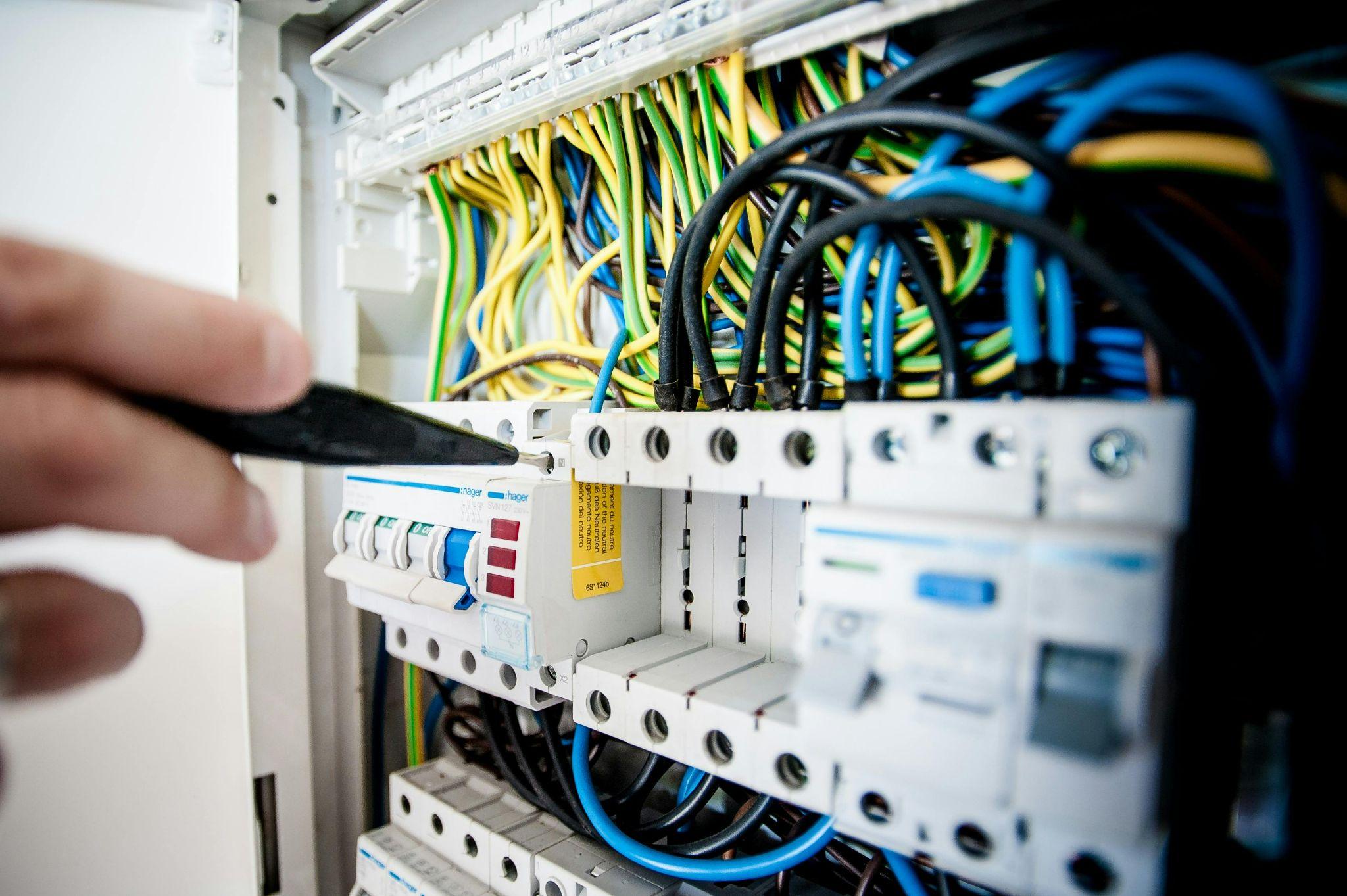When your home Wi‑Fi struggles to reach every corner, leaving you with frustrating dead zones and sluggish connections, the decision between Wi‑Fi Extenders vs. Mesh Networks becomes critical. Both solutions promise to eliminate coverage gaps, but they take fundamentally different approaches to solving your connectivity problems. Understanding which technology aligns with your specific needs, budget, and home layout will determine whether you achieve seamless internet access or continue battling inconsistent performance.
Understanding Core Technologies
The fundamental difference between Wi‑Fi extenders and mesh networks lies in their architectural approach to expanding wireless coverage. While both technologies aim to eliminate dead zones, they employ distinct methods that significantly impact performance, management complexity, and user experience.
What is a Wi‑Fi Extender
A Wi‑Fi extender functions as a signal repeater that captures your existing router’s wireless signal and rebroadcasts it to extend coverage into previously unreachable areas. These devices typically create a separate network name (SSID), requiring manual switching between your main network and the extended network as you move throughout your home.
Advantages:
- Low cost entry point for basic coverage extension
- Simple installation requiring minimal technical knowledge
- Compatibility with virtually any existing router
- Immediate results for single dead-spot scenarios
Disadvantages:
- Bandwidth reduction by approximately 50% due to signal repetition
- Manual network switching disrupts seamless connectivity
- Increased latency from additional signal hops
- Limited scalability as multiple extenders create network complications
What is a Mesh Network
A mesh network consists of multiple interconnected nodes that work together as a unified system, creating a single network name while automatically managing device connections and traffic routing. Unlike extenders, mesh systems maintain consistent performance through intelligent node handoff and dedicated backhaul channels.
Advantages:
- Seamless roaming with automatic device switching between nodes
- Unified network management through centralized applications
- Self-healing capabilities that automatically reroute traffic
- Consistent performance across all connected nodes
Disadvantages:
- Higher upfront investment compared to single extenders
- Potential overkill for simple single-room coverage needs
- Requires multiple devices even for basic implementations
| Feature | Wi‑Fi Extender | Mesh Network |
|---|---|---|
| Architecture | Single repeater device | Multiple interconnected nodes |
| Network Names | Separate SSID typically | Unified SSID across all nodes |
| Backhaul Type | Wireless only (most models) | Wireless or wired backhaul |
| Management | Individual device setup | Centralized app control |
| Expansion | Limited overlay capability | Linear node addition |
Coverage & Performance Differences
Real-world performance analysis reveals significant disparities between extenders and mesh systems in signal strength retention, speed consistency, and network reliability. These differences become particularly pronounced in multi-device households with varying bandwidth demands across different areas.
Extender Coverage Trade-offs
Wi‑Fi extenders inherently halve available bandwidth because they must receive and retransmit data using the same radio frequencies. This limitation creates noticeable performance degradation, especially during peak usage periods or bandwidth-intensive activities.
- Signal strength decreases with distance from the extender placement
- Latency increases by 10-15ms due to additional processing hops
- Network congestion amplifies as more devices connect through the extender
- Dead zones may persist between router and extender coverage areas
Mesh Performance Benefits
Mesh networks maintain superior performance through dedicated backhaul channels and intelligent traffic management. Modern mesh systems supporting Wi‑Fi 6 and Wi‑Fi 7 standards deliver consistent speeds across all nodes while accommodating high-density device environments.
- Seamless handoff maintains connections as devices move between coverage areas
- Load balancing distributes traffic efficiently across available nodes
- Band steering automatically assigns devices to optimal frequency bands
- Self-optimization continuously adjusts channels and power levels for peak performance
| Performance Metric | Wi‑Fi Extender | Mesh Network |
|---|---|---|
| Range Extension | 50-100 feet | 100-150 feet per node |
| Speed Retention | 50-70% of original | 80-95% of original |
| Latency Impact | +10-15ms | +2-5ms |
| Device Capacity | 10-15 devices | 50+ devices (system-wide) |
Setup and Ongoing Management

Installation complexity and maintenance requirements vary dramatically between extenders and mesh systems, influencing long-term user satisfaction and network reliability. Understanding these operational differences helps determine which solution matches your technical comfort level and time investment preferences.
Setting up a Wi‑Fi Extender
Wi‑Fi extender installation typically follows a straightforward plug-and-play approach:
- Plug the extender into a power outlet within your router’s range
- Connect via WPS button or access the setup interface through web browser
- Configure network credentials matching your existing router settings
- Test signal strength and relocate if necessary for optimal placement
- Create separate network name or maintain existing SSID with range identifier
Management limitations include:
- Manual network switching when moving between coverage areas
- Individual device configuration without centralized control
- Firmware updates requiring separate attention for each extender
- Performance monitoring through basic status indicators only
Deploying a Mesh System
Mesh system deployment leverages smartphone applications for streamlined installation:
- Download manufacturer’s app and create account for system management
- Connect primary node to modem and follow app-guided setup
- Position additional nodes based on app recommendations and signal testing
- Complete automatic configuration including network naming and security settings
- Optimize placement using app-based signal strength analysis
Advanced management features:
- Automatic firmware updates across all nodes simultaneously
- Centralized device management with usage monitoring and parental controls
- Network optimization through AI-driven performance adjustments
- Remote troubleshooting and configuration changes via mobile app
Scalability & Future‑Proofing
Network expansion capabilities and technology standards support determine long-term viability as your connectivity needs evolve. Evaluating scalability ensures your chosen solution accommodates growing device counts, bandwidth demands, and emerging wireless standards.
Adding Extenders vs Nodes
Wi‑Fi extender expansion faces significant limitations as each additional device compounds performance degradation and management complexity. Multiple extenders create overlapping coverage areas that can interfere with each other and confuse device connections.
- Performance degradation increases exponentially with additional extenders
- Network complexity grows unmanageably beyond two-device installations
- Dead zone creation between multiple extender coverage areas
- Manual configuration required for each additional device
Mesh network growth follows a linear expansion model where additional nodes enhance rather than compromise overall system performance.
- Seamless node addition through app-guided installation processes
- Performance improvement with strategic node placement
- Unified management regardless of total node count
- Automatic optimization as network topology expands
Supporting Wi‑Fi 6/7 and Smart Home Demands
Modern Wi‑Fi 6 and emerging Wi‑Fi 7 standards deliver significant improvements in speed, capacity, and efficiency. Mesh systems typically offer superior support for these advanced standards compared to budget-oriented extenders.
Future-proof considerations:
- Multi-gigabit backhaul support for high-bandwidth applications
- OFDMA technology enabling efficient multi-device communication
- Target Wake Time reducing smart device battery consumption
- WPA3 security providing enhanced network protection
Cost Considerations & Value Analysis

Financial planning for Wi‑Fi expansion requires evaluating both initial investment and long-term value proposition. While extenders offer lower entry costs, mesh systems often provide superior return on investment through enhanced performance and reduced troubleshooting time.
Budget‑friendly Extenders
Wi‑Fi extenders present an attractive entry point for users with limited budgets or simple coverage needs, typically ranging from $25-100 for basic models.
Extenders make sense when:
- Single dead zone requires coverage in small area
- Temporary solution needed while planning comprehensive upgrade
- Budget constraints prevent mesh system investment
- Existing router provides adequate performance for most areas
Investment in Mesh Systems
Mesh systems require higher upfront investment ($150-500+) but deliver superior long-term value through reduced maintenance, better performance, and enhanced user experience.
Investment benefits include:
- Elimination of dead zones throughout entire coverage area
- Reduced technical support needs due to automated management
- Future-ready technology supporting emerging wireless standards
- Enhanced property value through comprehensive connectivity infrastructure
| Cost Factor | Wi‑Fi Extender | Mesh Network |
|---|---|---|
| Initial Investment | $25-100 | $150-500+ |
| Performance per Dollar | Moderate for single zones | High for whole-home coverage |
| Maintenance Costs | Low hardware, high time | Higher hardware, minimal time |
| Upgrade Path | Limited expansion options | Scalable node addition |
Use Cases: Choose Based on Your Needs
Selecting the optimal solution requires matching technology capabilities with specific household requirements, usage patterns, and physical constraints. Consider these scenarios to identify which approach best serves your connectivity goals.
Single Dead‑spot in Small Apartment
Wi‑Fi extenders excel in addressing isolated coverage gaps in compact living spaces where budget considerations outweigh performance optimization.
- Bedroom or home office with weak signal from central router placement
- Bathroom or kitchen requiring basic connectivity for smart devices
- Balcony or patio needing occasional internet access
- Guest room with intermittent usage patterns
Extender advantages for small spaces:
- Cost-effective solution for targeted coverage improvement
- Minimal setup complexity suitable for non-technical users
- Adequate performance for basic browsing and streaming needs
Multi‑story Home with Heavy Streaming/Gaming
Mesh networks provide optimal solutions for larger homes with demanding bandwidth requirements and multiple simultaneous users across different floors and rooms.
Mesh advantages for complex environments:
- Consistent performance across all coverage areas
- Seamless device roaming between floors and rooms
- High-bandwidth support for 4K streaming and online gaming
- Smart home integration with reliable IoT device connectivity
- Future expansion capability as needs evolve
Hybrid & Alternative Solutions
Advanced networking scenarios may benefit from combining technologies or implementing specialized configurations that leverage the strengths of both approaches while mitigating individual limitations.
Using Extenders with Ethernet Backhaul
Wired backhaul connections significantly improve extender performance by eliminating wireless bandwidth sharing limitations. This configuration requires existing ethernet infrastructure but delivers mesh-like performance at extender pricing.
Performance improvements include:
- Full bandwidth retention through dedicated wired connection
- Reduced latency by eliminating wireless relay delays
- Enhanced reliability through stable wired backbone
- Better scalability compared to wireless-only extender chains
Combining Router Upgrades with Specific Extenders
Strategic router replacement paired with targeted extender deployment creates a layered approach that maximizes coverage while controlling costs.
Implementation considerations:
- High-performance router provides strong primary coverage
- Strategic extender placement addresses remaining dead zones
- Unified management through compatible manufacturer ecosystems
- Gradual upgrade path allowing phased technology adoption
Conclusion
The choice between Wi‑Fi extenders and mesh networks ultimately depends on your specific coverage needs, performance expectations, and budget constraints. Wi‑Fi extenders serve budget-conscious users with simple dead-zone issues, offering immediate relief at minimal cost but with performance trade-offs. Mesh networks provide comprehensive solutions for demanding environments, delivering seamless connectivity and future-ready capabilities at higher initial investment.
Consider extenders for single-room coverage gaps in smaller spaces where cost minimization takes priority. Choose mesh systems for multi-story homes, high-bandwidth usage, or situations requiring reliable whole-home coverage with minimal ongoing management. Your decision should align with current needs while considering future connectivity demands and the long-term value of consistent, reliable internet access throughout your living space.

